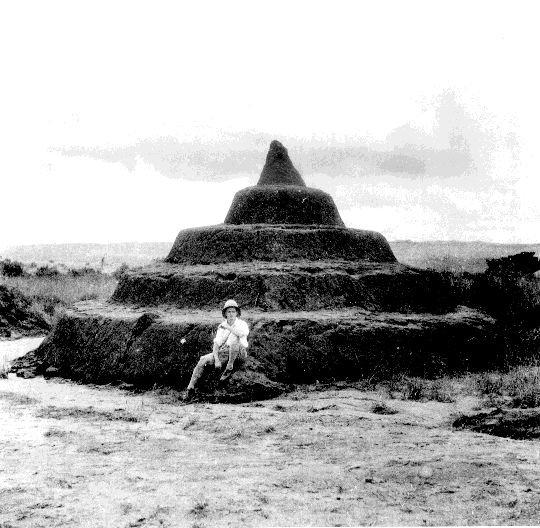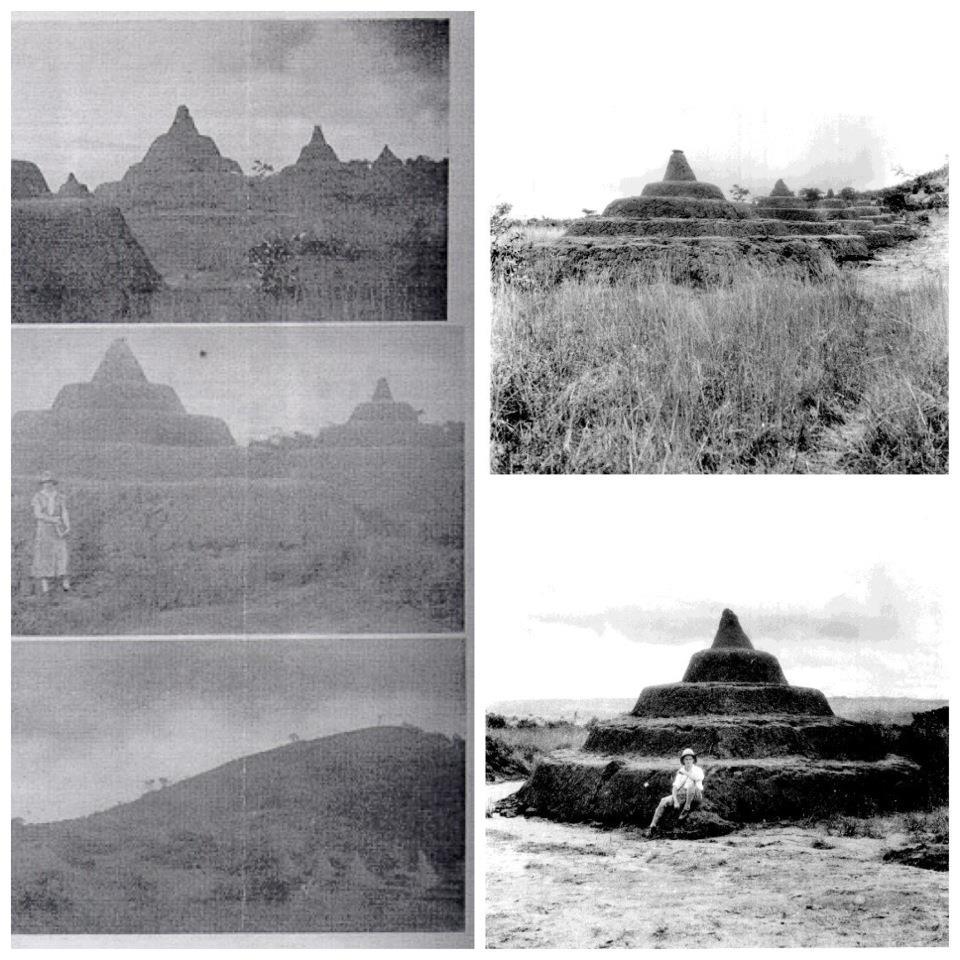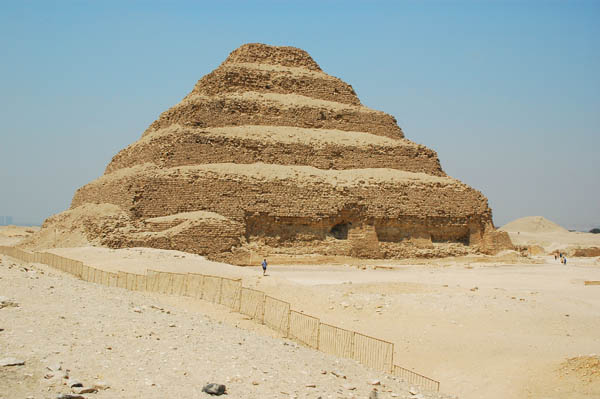
The pyramids, numbering 10 in number are circular and stepped and were made of clay.
See pictures of the pyramids below:



The first base section was 60 ft. in circumference and 3 ft. in height. The next stack was 45 ft. in circumference. Circular stacks continued, till it reached the top. The structures were temples for the god Ala/Uto, who was believed to reside at the top. A stick was placed at the top to represent the god’s residence. The structures were laid in groups of five parallel to each other. Because it was built of clay/mud like the Deffufa of Nubia, time has taken its toll requiring periodic reconstruction.
Strikingly, these pyramids bear striking resemblance to the Step Pyramid of Saqqara, in Egypt constructed in 2648 BC and without a doubt, derive from the same cultural/religious/philosophical tradition that inspired this ancient Egyptian monument. Moreso, more striking is the similar replication of Nubian-like pyramids thousands of miles away from the Nubian area in the heart of Igboland, or vice versa, whichever comes first.


The Step Pyramids of Saqqara, Egypt.
Evidence like this indicates a strong level of correlation between the ancient egyptians and the ancient Igbo. The building of the pyramids may have been done at the same time the first or second wave of Egyptian pyramids were built by the Nubians.
The Nubian dynasty of Egypt (the 25th Dynasty of Egypt) saw the first widespread construction of pyramids (many in modern Sudan) since the Middle Kingdom.

No comments:
Post a Comment